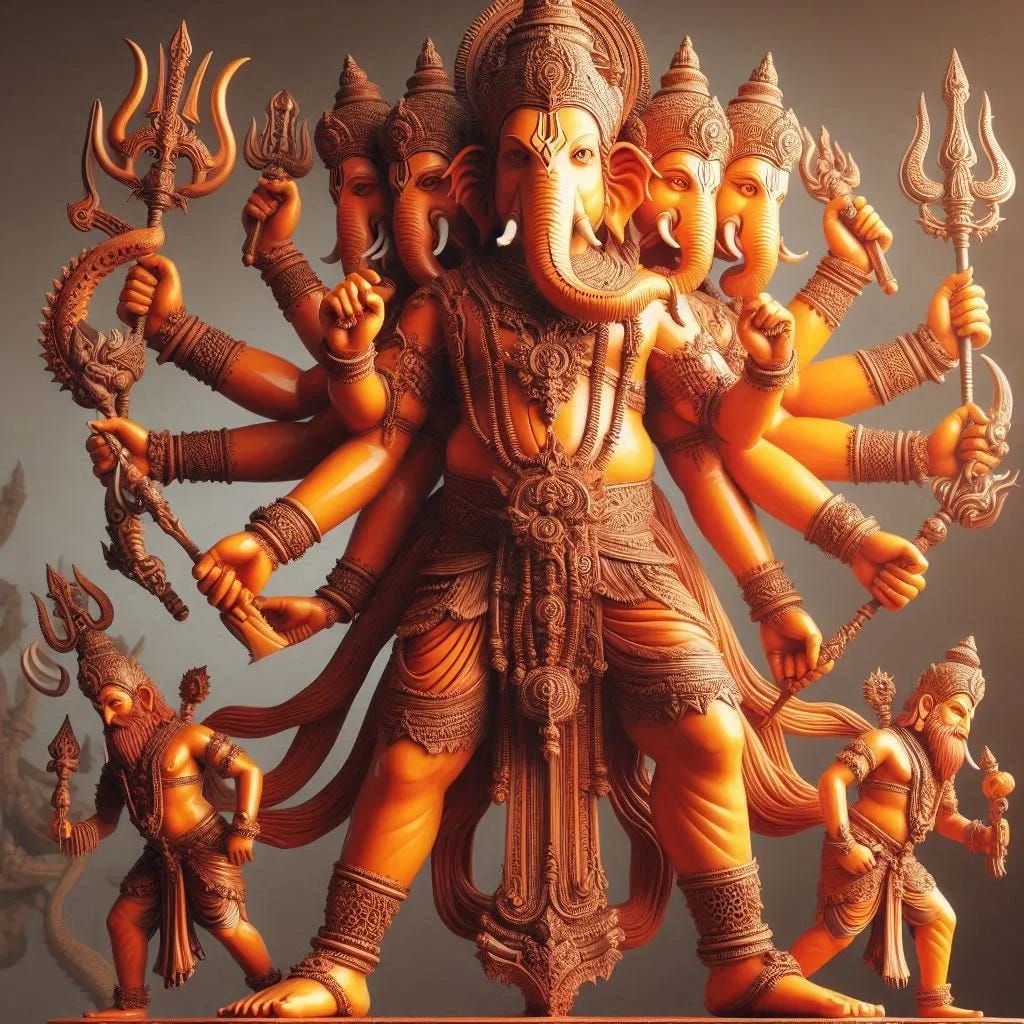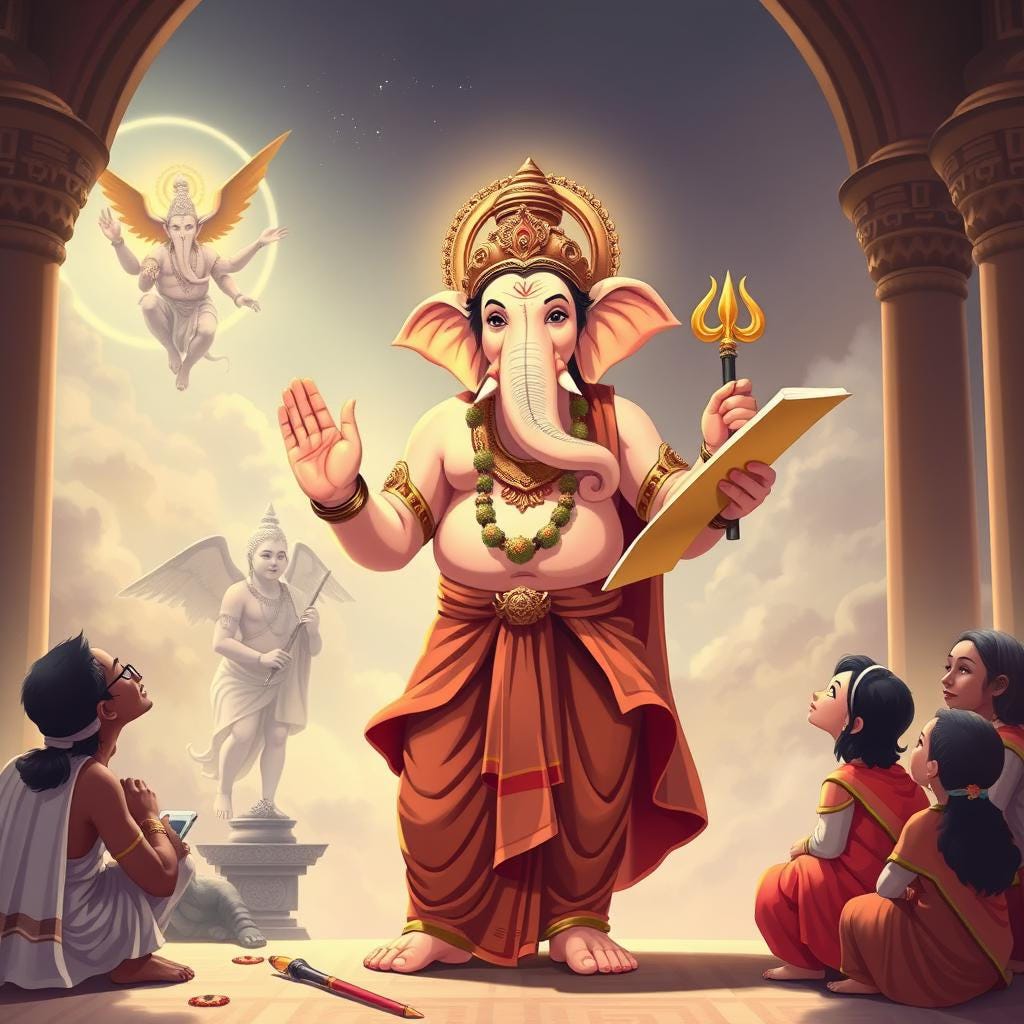Happy Teacher’s Day!
Today, we honor Dr. Sarvepalli Radhakrishnan, the second President of India, who was a respected teacher, philosopher, and statesman, along with all those who guide, teach, and shape our lives.
This weekend, we'll also be celebrating Ganesh Chaturthi, my favourite festival dedicated to Bhagwan Ganesha, the remover of obstacles and the harbinger of wisdom.
So, in this edition of This & That, I want to combine the spirit of both occasions and share my thoughts.
Ganesh Chaturthi has been a significant part of my growing-up years in Hyderabad. However, I discovered the true spirit of this day only after moving to Pune. Here Bappa (as He is affectionately called) is an emotion.
While the celebrations will be all over social media, I want to focus on some lessons I have learned listening to Bappa’s life.
By the way, it is said that Bhagwan Brahma had predicted that Bhagwan Ganesha would incarnate in different forms across the ages or yugas: as Vinayak in Kritayug, as Mayureshwar in Treta Yuga, as Gajanan in Dwaparyug, and as Dhumraketu in Kalyug. Each incarnation is linked to legends of Ganesha vanquishing various demons.
वक्रतुण्ड महाकाय, सूर्यकोटि समप्रभ:। निर्विघ्नं कुरु मे देव शुभ कार्येषु सर्वदा॥
Oh Bhagawan Ganesha, with your curved trunk and huge body, shining like a billion suns, please remove all obstacles for me in all my important tasks, now and always.
We invoke Him to remove all obstacles from our lives.
But did you know that He too faced numerous challenges? Many stories from the Ganesha Purana illustrate this. Here are a few notable ones:
He was beheaded by Bhagwan Shiva while guarding his mother, Parvati.
He broke his tusk to continue writing the Mahabharata epic after his pen broke.
He swallowed the destructive demon Analasura to stop the chaos.
One particular incident that interests me is the story from the Yudh Khand, where Ganesha battles the powerful demon king Sindhuasur, who was a great menace to the gods and the universe.
The Story:
In Mithila, the kingdom of Gandaki Nagari was ruled by King Chakrapani and his wife, Queen Ugra, who were deeply distressed by their childlessness. After many years and prayers, they were blessed with a son, Sindhu.
Sindhu was granted near-immortality by a boon from the sage Shukracharya, with the condition that he could only be killed by a being who was not born of a womb.
Empowered by this boon, Sindhu became Sindurasur - arrogant and invincible, attacking the heavens, defeating the gods, and taking control of their domains.
The gods, unable to defeat Sindurasur, sought Bhagwan Shiva’s help. Shiva declared that only Ganesha could vanquish the demon because Ganesha was born from divine energy, not from a womb.
To fulfill this prophecy, Parvati meditated intensely, and from her divine energy, Ganesha was born as Vinayaka, a fierce warrior. Ganesha, in his Vinayaka form, was a formidable figure with the strength and determination to defeat even the most powerful adversaries.
The Battle:
During the battle, Sindurasur’s armies, led by his two sons, tried to stop Vinayaka but were no match.
Vinayaka, with his divine knowledge, knew the secret of Sindurasur’s near-immortality. He used his weapon, the Pasha (noose), to extract the urn of nectar (which was the source of Sindurasur’s immortality) from within him, rendering Sindurasur vulnerable.
So when Sindurasur entered the battlefield, believing himself invincible, Vinayaka tore Sindurasur into pieces. The atmosphere was filled with saffron-colored and fragrant vermillion and it spread across the body of Vinayaka.
Thus, this form of Ganesh immersed in vermillion or sindur came to be known as Sindurvadan, that is the one who killed Sindurasur.
The gods delighted, not only praised Ganesha for his valor and wisdom but also acknowledged him as the remover of obstacles and the protector of the universe.
What can we learn from this?
Overcoming Arrogance and Hubris: Sindhu’s downfall was rooted in his arrogance, which stemmed from his perceived invincibility.
👉🏼 This teaches us the dangers of pride and the importance of humility, reminding us that no matter how powerful or successful we may become, arrogance can lead to our undoing.
The Power of Wisdom and Strategy: Ganesha’s victory was not just due to brute strength but also his strategic use of knowledge to exploit Sindhu’s weakness.
👉🏼 This teaches us the importance of wisdom, intelligence, and careful planning in overcoming challenges, showing that a well-thought-out strategy can triumph over sheer force.
The Role of Duty and Courage: Ganesha took on the responsibility of protecting the universe with courage and determination, fulfilling his duty regardless of the odds.
👉🏼 This teaches us to approach our responsibilities with the same sense of duty and bravery, even when faced with seemingly insurmountable obstacles.
Balance and Justice: Ganesha’s actions restored cosmic balance, highlighting the importance of justice and the need to take action against evil.
👉🏼 It teaches us that we should strive to contribute to balance and harmony in our lives and communities, standing up against wrongdoing when necessary.
In essence, this story inspires us to face challenges with humility, wisdom, and a strong sense of duty, while also reminding us of the importance of maintaining balance and justice in our lives.
Ganesha’s stories teach us important lessons, one of the reason I chose this topic for this month. His wisdom helps us make better decisions, and his cleverness shows us how quick thinking can solve problems. A well-known example of his wit is when he circled his parents instead of racing around the world, showing that they were his whole universe. By combining wisdom and wit, Ganesha teaches us that we can overcome any challenge with the right attitude and approach.
What’s your favorite Ganesha story?
Do let me know in the comments!
And as always… may Ganesha bless you with health and abundance!
Love and Peace
Aparna 💕



